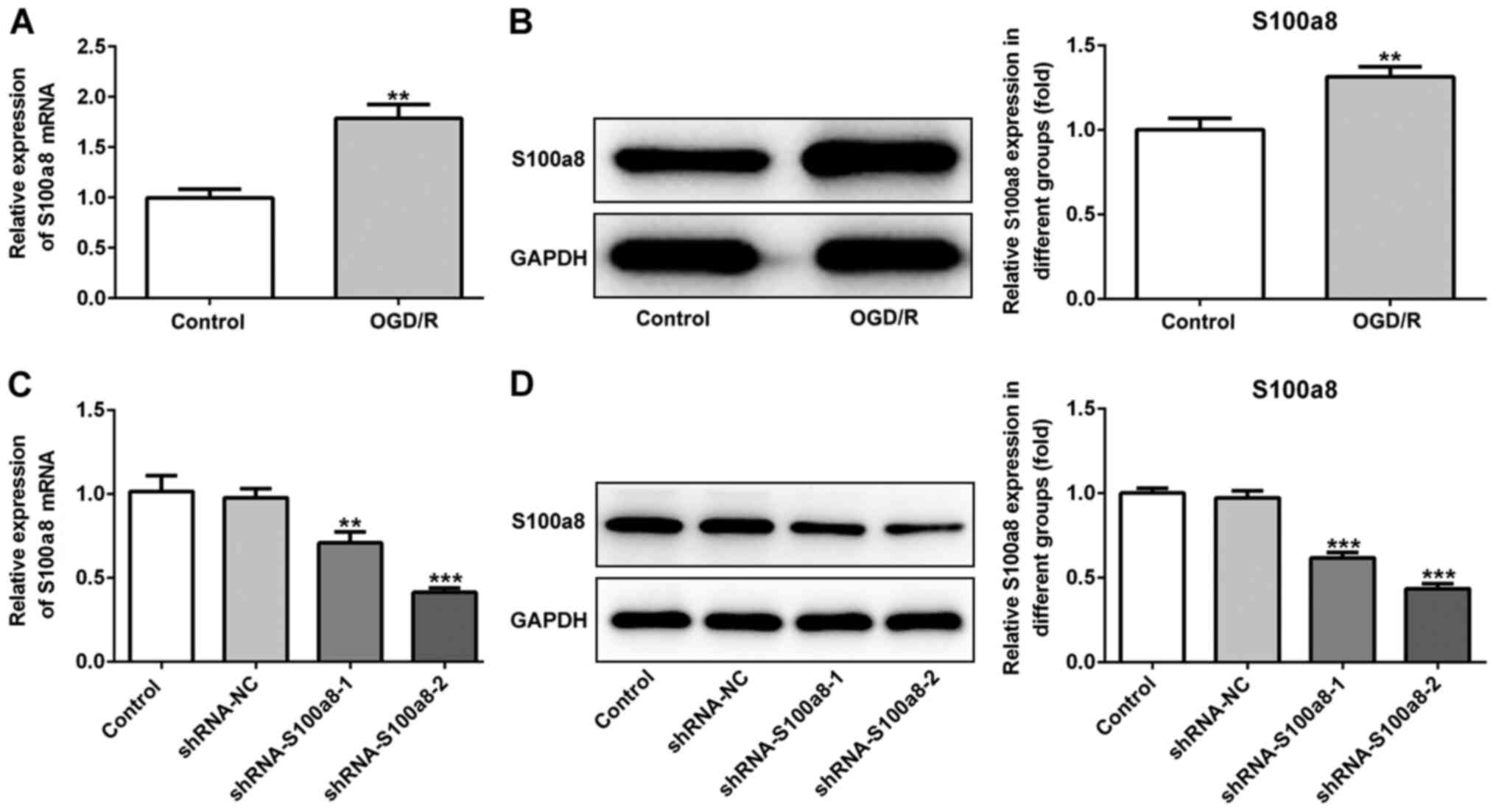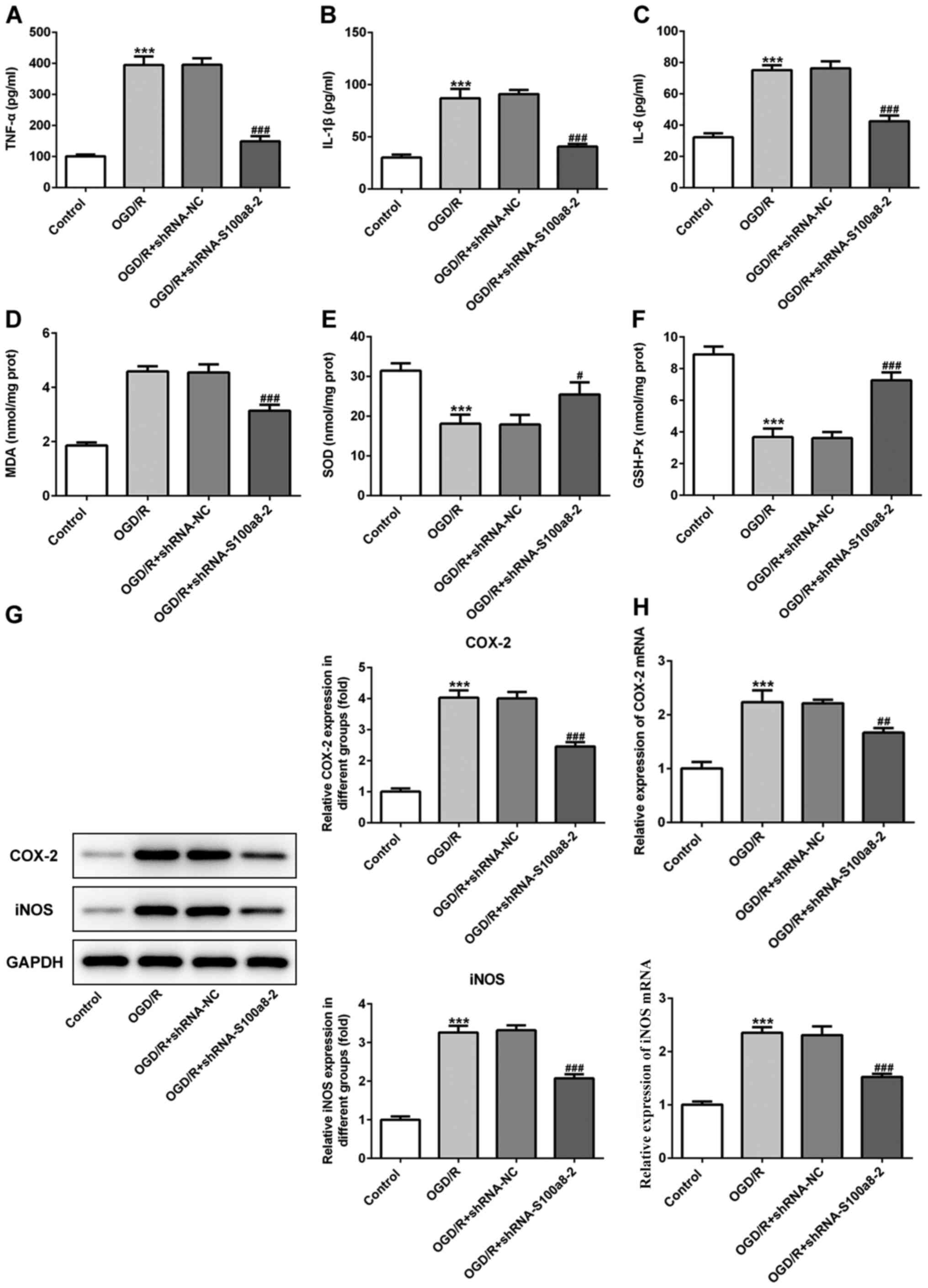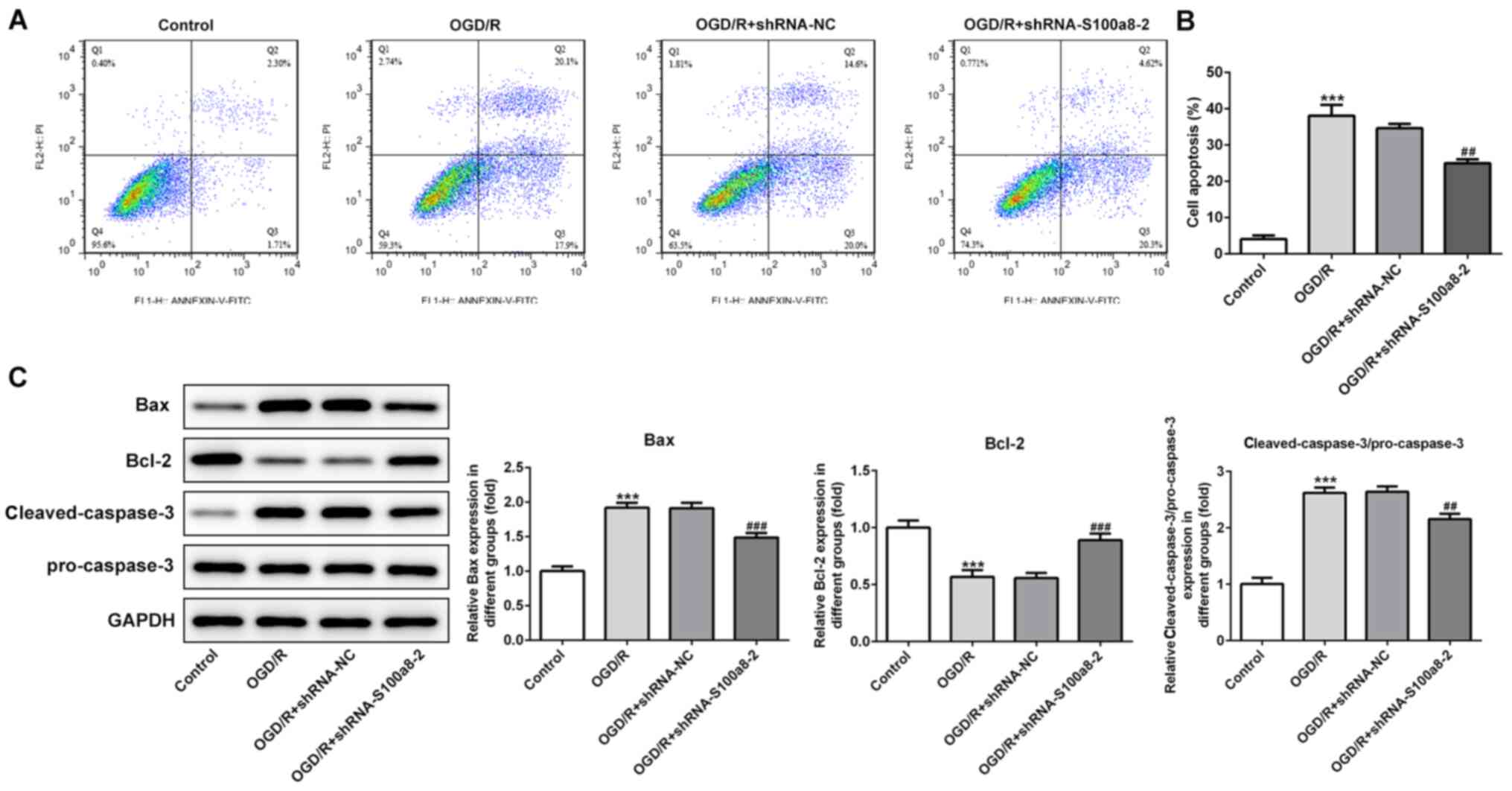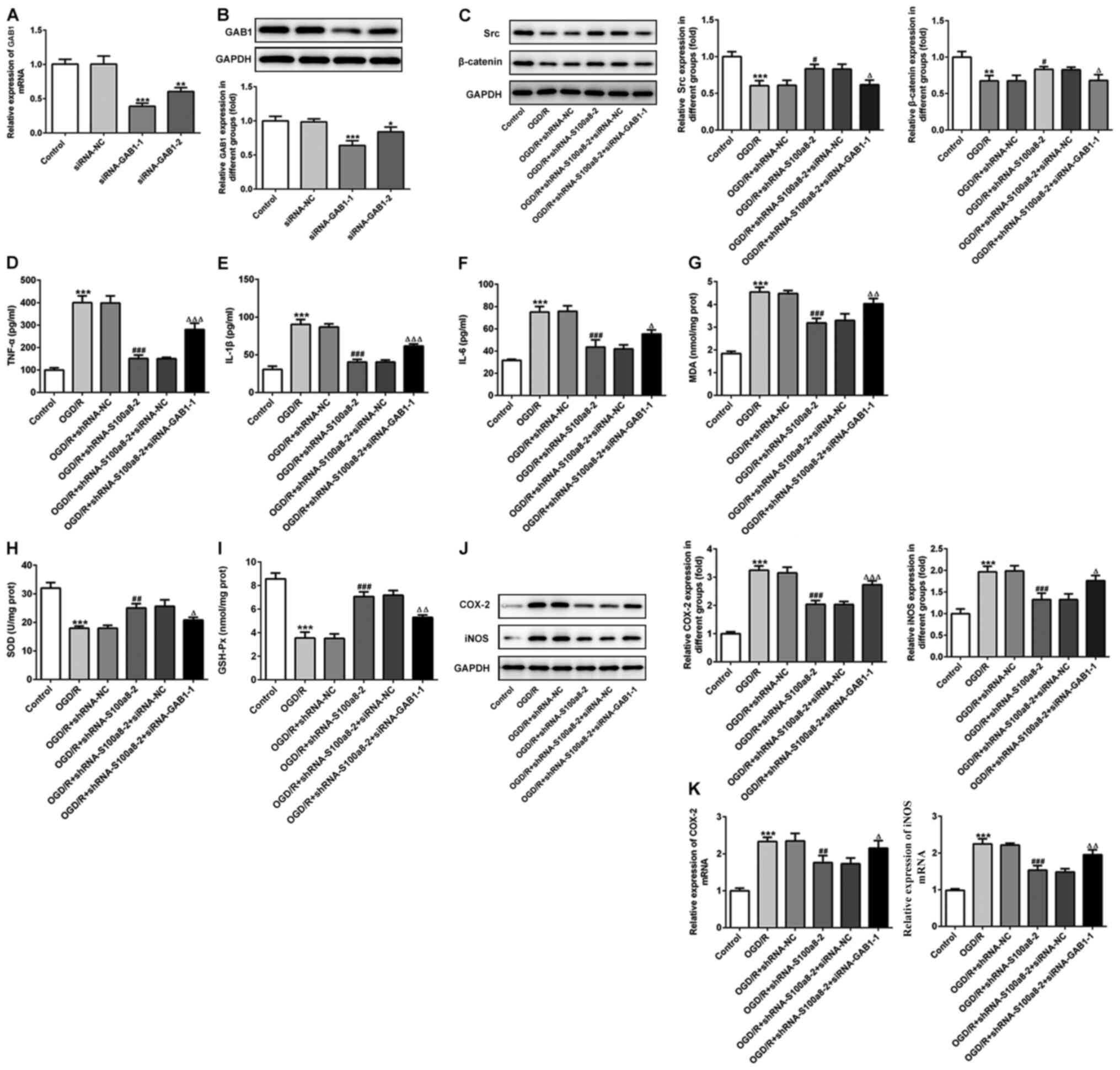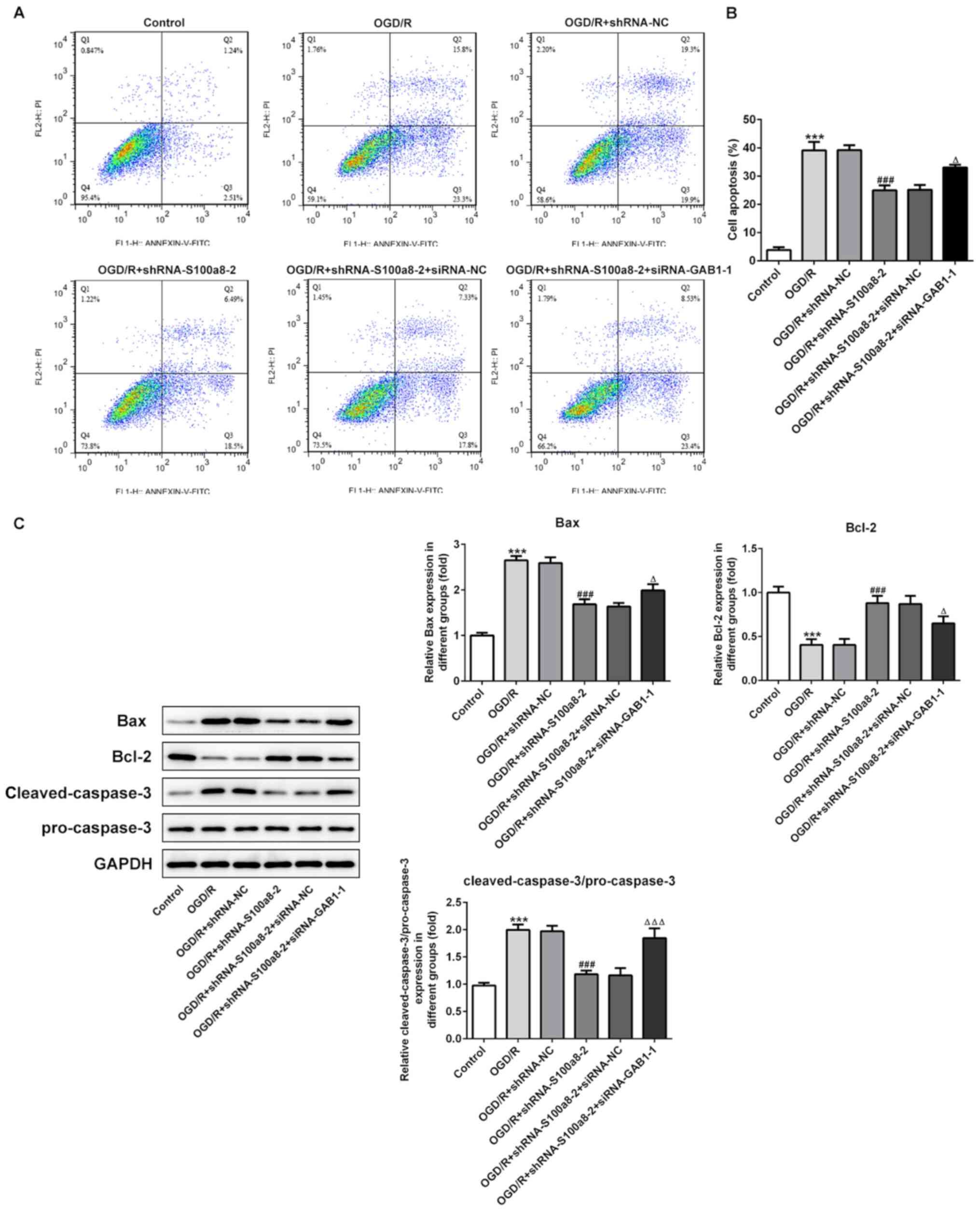|
1
|
Hayakawa K, Tanda K, Koshino S, Nishimura
A, Kizaki Z and Ohno K: Pontine and cerebellar injury in neonatal
hypoxic-ischemic encephalopathy: MRI features and clinical
outcomes. Acta Radiol. Jan 24–2020.(Epub ahead of print). doi:
10.1177/0284185119900442. View Article : Google Scholar : PubMed/NCBI
|
|
2
|
Douglas-Escobar M and Weiss MD:
Hypoxic-ischemic encephalopathy: A review for the clinician. JAMA
Pediatr. 169:397–403. 2015. View Article : Google Scholar : PubMed/NCBI
|
|
3
|
Dixon BJ, Reis C, Ho WM, Tang J and Zhang
JH: Neuroprotective strategies after neonatal hypoxic ischemic
encephalopathy. Int J Mol Sci. 16:22368–22401. 2015. View Article : Google Scholar : PubMed/NCBI
|
|
4
|
Howlett JA, Northington FJ, Gilmore MM,
Tekes A, Huisman TA, Parkinson C, Chung SE, Jennings JM,
Jamrogowicz JJ, Larson AC, et al: Cerebrovascular autoregulation
and neurologic injury in neonatal hypoxic-ischemic encephalopathy.
Pediatr Res. 74:525–535. 2013. View Article : Google Scholar : PubMed/NCBI
|
|
5
|
Busl KM and Greer DM: Hypoxic-ischemic
brain injury: Pathophysiology, neuropathology and mechanisms.
NeuroRehabilitation. 26:5–13. 2010. View Article : Google Scholar : PubMed/NCBI
|
|
6
|
Snyder EJ, Perin J, Chavez-Valdez R,
Northington FJ, Lee JK and Tekes A: Head Ultrasound resistive
indices are associated with brain injury on diffusion tensor
imaging magnetic resonance imaging in neonates with
hypoxic-ischemic encephalopathy. J Comput Assist Tomogr.
44:687–691. 2020. View Article : Google Scholar : PubMed/NCBI
|
|
7
|
Solevag AL, Schmolzer GM and Cheung PY:
Novel interventions to reduce oxidative-stress related brain injury
in neonatal asphyxia. Free Radic Biol Med. 142:113–122. 2019.
View Article : Google Scholar : PubMed/NCBI
|
|
8
|
Rodríguez-Rodríguez A, Egea-Guerrero JJ,
Murillo-Cabezas F and Carrillo-Vico A: Oxidative stress in
traumatic brain injury. Curr Med Chem. 21:1201–1211. 2014.
View Article : Google Scholar : PubMed/NCBI
|
|
9
|
Kovalčíková A, Gyurászová M,
Vavrincová-Yaghi D, Vavrinec P, Tóthová Ľ, Boor P, Šebeková K and
Celec P: Oxidative stress in the brain caused by acute kidney
injury. Metab Brain Dis. 33:961–967. 2018. View Article : Google Scholar : PubMed/NCBI
|
|
10
|
Khatri N, Thakur M, Pareek V, Kumar S,
Sharma S and Datusalia AK: Oxidative stress: Major threat in
traumatic brain injury. CNS Neurol Disord Drug Targets. 17:689–695.
2018. View Article : Google Scholar : PubMed/NCBI
|
|
11
|
Zonis S, Ljubimov VA, Mahgerefteh M,
Pechnick RN, Wawrowsky K and Chesnokova V: p21Cip restrains
hippocampal neurogenesis and protects neuronal progenitors from
apoptosis during acute systemic inflammation. Hippocampus.
23:1383–1394. 2013. View Article : Google Scholar : PubMed/NCBI
|
|
12
|
Kerkhoff C, Klempt M and Sorg C: Novel
insights into structure and function of MRP8 (S100A8) and MRP14
(S100A9). Biochim Biophys Acta. 1448:200–211. 1998. View Article : Google Scholar : PubMed/NCBI
|
|
13
|
Gebhardt C, Nemeth J, Angel P and Hess J:
S100A8 and S100A9 in inflammation and cancer. Biochem Pharmacol.
72:1622–1631. 2006. View Article : Google Scholar : PubMed/NCBI
|
|
14
|
Sun P, Li Q, Zhang Q, Xu L and Han JY:
Upregulated expression of S100A8 in mice brain after focal cerebral
ischemia reperfusion. World J Emerg Med. 4:210–214. 2013.
View Article : Google Scholar : PubMed/NCBI
|
|
15
|
Dessing MC, Tammaro A, Pulskens WP, Teske
GJ, Butter LM, Claessen N, van Eijk M, van der Poll T, Vogl T, Roth
J, et al: The calcium-binding protein complex S100A8/A9 has a
crucial role in controlling macrophage-mediated renal repair
following ischemia/reperfusion. Kidney Int. 87:85–94. 2015.
View Article : Google Scholar : PubMed/NCBI
|
|
16
|
Li Y, Chen B, Yang X, Zhang C, Jiao Y, Li
P, Liu Y, Li Z, Qiao B, Bond Lau W, et al: S100a8/a9 signaling
causes mitochondrial dysfunction and cardiomyocyte death in
response to ischemic/reperfusion injury. Circulation. 140:751–764.
2019. View Article : Google Scholar : PubMed/NCBI
|
|
17
|
Sakaguchi M, Yamamoto M, Miyai M, Maeda T,
Hiruma J, Murata H, Kinoshita R, Winarsa Ruma IM, Putranto EW,
Inoue Y, et al: Identification of an S100A8 receptor neuroplastin-β
and its heterodimer formation with EMMPRIN. J Invest Dermatol.
136:2240–2250. 2016. View Article : Google Scholar : PubMed/NCBI
|
|
18
|
Zhao J, Yin M, Deng H, Jin FQ, Xu S, Lu Y,
Mastrangelo MA, Luo H and Jin ZG: Cardiac Gab1 deletion leads to
dilated cardiomyopathy associated with mitochondrial damage and
cardiomyocyte apoptosis. Cell Death Differ. 23:695–706. 2016.
View Article : Google Scholar : PubMed/NCBI
|
|
19
|
Sun L, Chen C, Jiang B, Li Y, Deng Q, Sun
M, An X, Yang X, Yang Y, Zhang R, et al: Grb2-associated binder 1
is essential for cardioprotection against ischemia/reperfusion
injury. Basic Res Cardiol. 109:4202014. View Article : Google Scholar : PubMed/NCBI
|
|
20
|
Holgado-Madruga M and Wong AJ: Gab1 is an
integrator of cell death versus cell survival signals in oxidative
stress. Mol Cell Biol. 23:4471–4484. 2003. View Article : Google Scholar : PubMed/NCBI
|
|
21
|
Lu T, Wang Z, Prativa S, Xu Y, Wang T,
Zhang Y, Yu L, Xu N, Tang J, You W, et al: Macrophage stimulating
protein preserves blood brain barrier integrity after intracerebral
hemorrhage through recepteur d'origine nantais dependent
GAB1/Src/β-catenin pathway activation in a mouse model. J
Neurochem. 148:114–126. 2019. View Article : Google Scholar : PubMed/NCBI
|
|
22
|
Li Y, Thompson H, Hemphill C, Hong F,
Forrester J, Johnson RH, Zhang W and Meldrum DR: An improved
one-tube RT-PCR protocol for analyzing single-cell gene expression
in individual mammalian cells. Anal Bioanal Chem. 397:1853–1859.
2010. View Article : Google Scholar : PubMed/NCBI
|
|
23
|
Rocha-Ferreira E, Vincent A, Bright S,
Peebles DM and Hristova M: The duration of hypothermia affects
short-term neuroprotection in a mouse model of neonatal hypoxic
ischaemic injury. PLoS One. 13:e01998902018. View Article : Google Scholar : PubMed/NCBI
|
|
24
|
Lundgren C, Brudin L, Wanby AS and
Blomberg M: Ante- and intrapartum risk factors for neonatal hypoxic
ischemic encephalopathy. J Matern Fetal Neonatal Med. 31:1595–1601.
2018. View Article : Google Scholar : PubMed/NCBI
|
|
25
|
Huang SY, Tai SH, Chang CC, Tu YF, Chang
CH and Lee EJ: Magnolol protects against ischemic-reperfusion brain
damage following oxygen-glucose deprivation and transient focal
cerebral ischemia. Int J Mol Med. 41:2252–2262. 2018.PubMed/NCBI
|
|
26
|
Zhang J, Xiao F, Zhang L, Wang X, Lai X,
Shen Y, Zhang M, Zhou B, Lang H, Yu P and Hua F: Alpha-Lipoic acid
preconditioning and ischaemic postconditioning synergistically
protect rats from cerebral injury induced by ischemia and
reperfusion partly via inhibition TLR4/MyD88/NF-κB signaling
pathway. Cell Physiol Biochem. 51:1448–1460. 2018. View Article : Google Scholar : PubMed/NCBI
|
|
27
|
Ma M, Uekawa K, Hasegawa Y, Nakagawa T,
Katayama T, Sueta D, Toyama K, Kataoka K, Koibuchi N, Kuratsu J and
Kim-Mitsuyama S: Pretreatment with rosuvastatin protects against
focal cerebral ischemia/reperfusion injury in rats through
attenuation of oxidative stress and inflammation. Brain Res.
1519:87–94. 2013. View Article : Google Scholar : PubMed/NCBI
|
|
28
|
Yu LM, Di WC, Dong X, Li Z, Zhang Y, Xue
XD, Xu YL, Zhang J, Xiao X, Han JS, et al: Melatonin protects
diabetic heart against ischemia-reperfusion injury, role of
membrane receptor-dependent cGMP-PKG activation. Biochim Biophys
Acta Mol Basis Dis. 1864:563–578. 2018. View Article : Google Scholar : PubMed/NCBI
|
|
29
|
Jiang S, Li T, Ji T, Yi W, Yang Z, Wang S,
Yang Y and Gu C: AMPK: Potential therapeutic target for ischemic
stroke. Theranostics. 8:4535–4551. 2018. View Article : Google Scholar : PubMed/NCBI
|
|
30
|
Hwang JH, Kumar VR, Kang SY, Jung HW and
Park YK: Effects of flower buds extract of tussilago farfara on
focal cerebral ischemia in rats and inflammatory response in BV2
microglia. Chin J Integr Med. 24:844–852. 2018. View Article : Google Scholar : PubMed/NCBI
|
|
31
|
Luo Y, Wang C, Li WH, Liu J, He HH, Long
JH, Yang J, Sui X, Wang S, You Z and Wang YA: Madecassoside
protects BV2 microglial cells from oxygen-glucose
deprivation/reperfusion-induced injury via inhibition of the
toll-like receptor 4 signaling pathway. Brain Res. 1679:144–154.
2018. View Article : Google Scholar : PubMed/NCBI
|
|
32
|
Chen J, Zhang DM, Feng X, Wang J, Qin YY,
Zhang T, Huang Q, Sheng R, Chen Z, Li M and Qin ZH: TIGAR inhibits
ischemia/reperfusion-induced inflammatory response of astrocytes.
Neuropharmacology. 131:377–388. 2018. View Article : Google Scholar : PubMed/NCBI
|
|
33
|
Li X, Cheng S, Hu H, Zhang X, Xu J, Wang R
and Zhang P: Progranulin protects against cerebral
ischemia-reperfusion (I/R) injury by inhibiting necroptosis and
oxidative stress. Biochem Biophys Res Commun. 521:569–576. 2020.
View Article : Google Scholar : PubMed/NCBI
|
|
34
|
Ayala A, Munoz MF and Arguelles S: Lipid
peroxidation: Production, metabolism, and signaling mechanisms of
malondialdehyde and 4-hydroxy-2-nonenal. Oxid Med Cell Longev.
2014:3604382014. View Article : Google Scholar : PubMed/NCBI
|
|
35
|
Guo M, Lu H, Qin J, Qu S, Wang W, Guo Y,
Liao W, Song M, Chen J and Wang Y: Biochanin a provides
neuroprotection against cerebral ischemia/reperfusion injury by
Nrf2-Mediated inhibition of oxidative stress and inflammation
signaling pathway in rats. Med Sci Monit. 25:8975–8983. 2019.
View Article : Google Scholar : PubMed/NCBI
|
|
36
|
Cui Y, Wang JQ, Shi XH, Wang YY, Liu HY,
Li Z, Dong Y, Mang J and Xu ZX: Nodal mitigates cerebral
ischemia-reperfusion injury via inhibiting oxidative stress and
inflammation. Eur Rev Med Pharmacol Sci. 23:5923–5933.
2019.PubMed/NCBI
|
|
37
|
Pruenster M, Vogl T, Roth J and Sperandio
M: S100A8/A9: From basic science to clinical application. Pharmacol
Ther. 167:120–131. 2016. View Article : Google Scholar : PubMed/NCBI
|
|
38
|
Fujita Y, Khateb A, Li Y, Tinoco R, Zhang
T, Bar-Yoseph H, Tam MA, Chowers Y, Sabo E, Gerassy-Vainberg S, et
al: Regulation of S100A8 Stability by RNF5 in intestinal epithelial
cells determines intestinal inflammation and severity of colitis.
Cell Rep. 24:3296–3311.e6. 2018. View Article : Google Scholar : PubMed/NCBI
|
|
39
|
Ma L, Sun P, Zhang JC, Zhang Q and Yao SL:
Proinflammatory effects of S100A8/A9 via TLR4 and RAGE signaling
pathways in BV-2 microglial cells. Int J Mol Med. 40:31–38. 2017.
View Article : Google Scholar : PubMed/NCBI
|
|
40
|
Simard JC, Cesaro A, Chapeton-Montes J,
Tardif M, Antoine F, Girard D and Tessier PA: S100A8 and S100A9
induce cytokine expression and regulate the NLRP3 inflammasome via
ROS-dependent activation of NF-KB(1). PLoS One. 8:e721382013.
View Article : Google Scholar : PubMed/NCBI
|
|
41
|
Ren Z, Chen L, Wang Y, Wei X, Zeng S,
Zheng Y, Gao C and Liu H: Activation of the Omega-3 Fatty Acid
Receptor GPR120 protects against focal cerebral ischemic injury by
preventing inflammation and apoptosis in mice. J Immunol.
202:747–759. 2019. View Article : Google Scholar : PubMed/NCBI
|
|
42
|
Liu H, Wu X, Luo J, Wang X, Guo H, Feng D,
Zhao L, Bai H, Song M, Liu X, et al: Pterostilbene attenuates
astrocytic inflammation and neuronal oxidative injury after
Ischemia-Reperfusion by inhibiting NF-KB phosphorylation. Front
Immunol. 10:24082019. View Article : Google Scholar : PubMed/NCBI
|
|
43
|
Weng C, Chen Y, Wu Y, Liu X, Mao H, Fang
X, Li B, Wang L, Guan M, Liu G, et al: Silencing UBE4B induces
nasopharyngeal carcinoma apoptosis through the activation of
caspase3 and p53. Onco Targets Ther. 12:2553–2561. 2019. View Article : Google Scholar : PubMed/NCBI
|
|
44
|
He JT, Li HQ, Li GF and Yang L: Hyperoside
protects against cerebral ischemia-reperfusion injury by
alleviating oxidative stress, inflammation and apoptosis in rats.
Biotechnol Biotechnol Equipment. 33:798–806. 2019. View Article : Google Scholar
|
|
45
|
Ouyang YB and Giffard RG: MicroRNAs affect
BCL-2 family proteins in the setting of cerebral ischemia.
Neurochem Int. 77:2–8. 2014. View Article : Google Scholar : PubMed/NCBI
|
|
46
|
Gupta R and Ghosh S: Putative roles of
mitochondrial Voltage-Dependent Anion Channel, Bcl-2 family
proteins and c-Jun N-terminal Kinases in ischemic stroke associated
apoptosis. Biochim Open. 4:47–55. 2017. View Article : Google Scholar : PubMed/NCBI
|
|
47
|
Kerkhoff C, Voss A, Scholzen TE, Averill
MM, Zänker KS and Bornfeldt KE: Novel insights into the role of
S100A8/A9 in skin biology. Exp Dermatol. 21:822–826. 2012.
View Article : Google Scholar : PubMed/NCBI
|
|
48
|
Hu Y, Fan B, Zhang LH, Cheng XJ, Niu ZJ
and Ji JF: Clinical significance of S100A8 and S100A9 expression in
gastric cancer. Zhonghua Yi Xue Za Zhi. 93:3369–3374. 2013.(In
Chinese). PubMed/NCBI
|
|
49
|
Ghavami S, Eshragi M, Ande SR, Chazin WJ,
Klonisch T, Halayko AJ, McNeill KD, Hashemi M, Kerkhoff C and Los
M: S100A8/A9 induces autophagy and apoptosis via ROS-mediated
cross-talk between mitochondria and lysosomes that involves BNIP3.
Cell Res. 20:314–331. 2010. View Article : Google Scholar : PubMed/NCBI
|
|
50
|
Jianrong S, Yanjun Z, Chen Y and Jianwen
X: DUSP14 rescues cerebral ischemia/reperfusion (IR) injury by
reducing inflammation and apoptosis via the activation of Nrf-2.
Biochem Biophys Res Commun. 509:713–721. 2019. View Article : Google Scholar : PubMed/NCBI
|
|
51
|
Hao MQ, Xie LJ, Leng W and Xue RW: Trim47
is a critical regulator of cerebral ischemia-reperfusion injury
through regulating apoptosis and inflammation. Biochem Biophys Res
Commun. 515:651–657. 2019. View Article : Google Scholar : PubMed/NCBI
|
|
52
|
Higuchi K, Nakaoka Y, Shioyama W, Arita Y,
Hashimoto T, Yasui T, Ikeoka K, Kuroda T, Minami T, Nishida K, et
al: Endothelial Gab1 deletion accelerates angiotensin II-dependent
vascular inflammation and atherosclerosis in apolipoprotein E
knockout mice. Circ J. 76:2031–2040. 2012. View Article : Google Scholar : PubMed/NCBI
|















